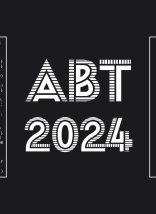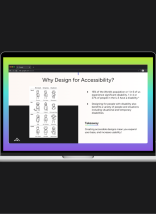Ahhh, relationships. When they’re good, they’re great. When they’re bad, they can be downright painful. How’s an Account Executive supposed to keep that spark alive? Here’s my advice on how to get, maintain, and keep a healthy client relationship.
Swiping Right…on the Right One.
Compatibility leads to happiness and harmony. There are plenty of prospects out there that are attractive on paper but may not be looking for what you have to offer. Make sure that you and your potential client are a match.
The most important part of this is knowing what your company is looking for in a partner before you begin a conversation. Do you share the same interests and goals? Are your communication styles similar? Do you just ‘get’ each other? Once you find that match, be confident in what you have to offer and know what they expect from your collaboration. Your confidence will inspire their confidence and relationship potential will bloom.
“Dress” to Impress
So, you’ve set the first date—a face-to-face meeting with the potential client. Like most first dates, you want to put your best foot forward and leave the right impression.
- Do your research – Don’t be afraid to turn to Google and LinkedIn to gather information prior to your first meeting. Find out more about the client’s company, along with their own professional history, background, and interests. Sometimes this may be all you have to go on prior to the first meeting, and that’s okay! The goal here is to know what to ask and listen for.
- Show you are interested – Active listening is necessary in any stage of the relationship, but it’s key when you’re wooing someone new. In that first meeting, you will be able to glean what they need or are interested in from your company, giving your team a leg up in creating the right pitch and strategy. Asking the right questions is crucial. You should be able to understand their budget, internal process, and expectations during those first conversations. Establish what you’re offering and what they need. It’s so much easier to keep a client happy when proper expectations are set from the beginning.
- Come prepared – After listening to their needs, wants, and wishes, make sure you have a bank of real world examples you can pull from to show why you’re the right fit. Talk about past projects that parallel their vision as examples of how your company has delivered in the past. Share whitepapers or case studies your company has produced. Use anything you have to help them connect to you.
Defining the Relationship
So your first date with the new client was followed by a second and then a third! They seem really interested and you’ve gathered plenty of information. It’s time to have the ‘what are we’ conversation and decide how best to move forward.
This is where you put everything you’ve learned about your client to good use. Make sure you’re proposing a solution that not only gives them what they want, but that your team can deliver successfully. Don’t neglect timelines and details of when certain milestones will be reached in your collaboration. Short-changing your team on key details in an effort to win business will only cause headaches in the long run.
Locking it Down
You’ve submitted a proposal and negotiated a contract. Yay! Now it’s time to take the big leap together. First, make sure your production team is on the same page as you and your client. Communication is everything in a relationship, so make sure the client’s vision and priorities are clear and shared with your internal team.

Start by introducing your client to the family in a kickoff meeting with the client and the production team. Just like in our regular families, if you’re concerned about any potential personality conflicts or sensitive subjects, prepare your team before they meet the client. Be sure everyone knows what to expect ahead of time.
Hitting the Rut
We all know how easy relationships are in the beginning. Everyone is excited, ideas are flowing, teams are gelling, things are moving. Then comes the middle of the project—heads are down, bumps are hit, and it can feel like the project isn’t going where we all imagined on day one. Here’s how to keep the relationship healthy in tough times:
- Stay connected – Stay in touch with your client. Plan one-on-one check-ins to stay updated on how your client is feeling about the project. Scheduling these regular meetings will maintain communication without smothering your client. It’s also important to stay connected to your production team, as it’s easier for a project manager and account executive team to handle roadblocks and scope creep together.
- Embrace the unexpected – Unless you have a reliable Magic 8 ball, your project will experience unexpected hiccups. It could be anything from a technology update that requires more patching to your lead developer falling off his mountain bike and breaking his collarbone. Regardless of what it is, you’ve got to address it head on by communicating it to the client and planning a work-around.
- Handle conflicts – By staying connected to the project life cycle, you’ll be able to foresee any potential conflicts and address them before they become full-blown issues. Be sure to give the client a chance to voice their concerns and share the necessary feedback with the team. Negotiate the peace and prioritize moving the project forward.
- Keep that spark alive – If the client gets frustrated by the process or how long it’s taking to complete, take a moment to remind them of the long-term goals you’re working towards and the progress you’ve made. Soothe their concerns, and show them why you got together in the first place.
How Serious Is This Relationship?
You’ve finally hit the home stretch, getting ready to deploy the amazing work that has taken months to achieve. Now comes the next step: are you in this for the long haul, or is this the end of the affair?
- Happily ever after – Hopefully you’ve had a successful working relationship thus far. You’ve built a healthy backlog of features and updates the client wants to pursue and the client truly understands the cost of ownership for their piece of technology. Now you need to figure out how best to move forward. Chat with your client and figure out what works best for their needs and budgeting cycles. Perhaps another SOW or some sort of retainer agreement will be agreed upon. Do it prior to the end of the contract so you don’t lose momentum.
- The fling has been flung – There are projects that are just one-and-done type contracts. Because you’ve stayed connected with your client, you both understand that the end of the project is it…for now.
Stay connected. Be sure you keep the communication alive so you are at the top of their mind when the next project comes down the pipe. Think about inviting them to client-friendly events or connect with them on LinkedIn. Send a friendly email every so often to check in on the status of the application you worked on or share how any new services would benefit their business. - It’s not you, it’s me – Sometimes you just know it’s not a good idea to continue with the relationship. Be honest with yourself, your team and your higher ups. If the client or project isn’t a good fit for your company, there is no reason to pursue additional work after the contract ends. Have the hard conversation with the client, and figure out a way to separate in a healthy manner. Think about providing recommendations for other vendors who may be a good fit and try to be as proactive as possible if you’re initiating the break-up.
- You’ve been ghosted – The client has decided not to move forward but doesn’t know how to have that conversation with you. So they just disappear. They stop responding to emails or returning voicemails.
You should see it coming well before it happens. If the client complains regularly or there are ongoing personality conflicts that can never be resolved, these are clues that the relationship is fading fast. Enlist the help of your management team to define when enough is enough. Your time is valuable, and there’s no need to waste it chasing something that won’t come to fruition.
Every Client Relationship Is Special. Make Them Count.

Whether you’re working together on one project or embarking on a long-term partnership, every client relationship has its own excitement, challenges, and rewards. If you always bring a listening ear, a friendly demeanor, and an eagerness to deliver what’s best for them, you’re well on your way to being a great partner for each and every one of your client relationships.








